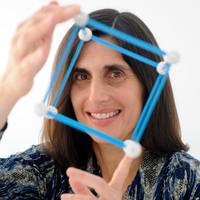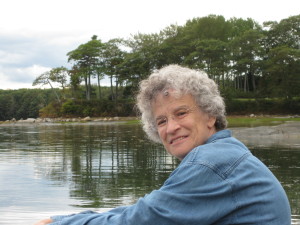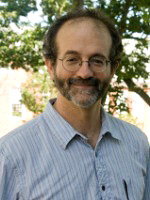
Ann Trenk is Professor and Chair of Mathematics at Wellesley. Her areas of specialty are graph theory and partially ordered sets. While her work is chiefly theoretical, she chooses research problems that arise in modeling real world phenomena, teaches across the mathematics curriculum, and actively pursues outreach to K-12 teachers. She has served on committees central to the Association for Women in Mathematics and the Mathematical Association of America, among others national organizations.
Tags:
The Ancient Greeks were frightened to think about infinity. So is Al Cooper, a character in A Disappearing Number. Certainly for the layperson, it is confounding to hear that, as Al is told, that “some Infinities are larger than others…” What does that mean? How have mathematicians looked at infinity? How does that compare with the way artists and philosophers understand infinity?

Bjorn Poonen is the Claude Shannon Professor of Mathematics at MIT. His research focuses mainly on number theory and algebraic geometry; in particular, he is interested in the rational number solutions to equations. He is a fellow of the American Academy of Arts and Sciences and of the American Mathematical Society, and he is the recipient of several awards, including most recently the 2014 MIT School of Science Prize in Undergraduate Teaching. Fifteen mathematicians have completed a Ph.D. under his guidance.
William Hugh Woodin is Professor of Mathematics and Philosophy at Harvard University. He has made notable contributions to the theory of inner models and determinacy. A type of large cardinal, the Woodin cardinal, bears his name. Woodin has done work on the theory of generic multiverses and now predicts that there should be a way of constructing an inner model for almost all known large cardinals which he calls the Ultimate L. He has served as chair of the Berkeley mathematics department, and is a Fellow of the American Academy of Arts and Sciences.
Tags:
Congratulate the cast and creative team at an reception after the performance.
Tags:

- Dr. Margaret J. Geller
Dr. Margaret J. Geller is a world-renowned and multi-award winning astrophysicist best know for her pioneering maps of the distribution of galaxies in the nearby universe. These maps opened the era of mapping the universe. Dr. Geller is member of the National Academy of Sciences. She has been widely recognized for her technical and public contributions to science including a MacArthur Fellowship in 1990. She has received 6 honorary degrees, including one recently from Dartmouth College in 2014.
Broadly committed to science education, Dr. Geller has generously volunteered for a special one-night talkback about being a current leading female physicist before she departs to Germany to receive their highest award in astrophysics.
Dr. Geller’s Website: www.cfa.harvard.edu/~mjg
Tags:

David Hammer is the Tufts University Department of Education Chair and a full-time professor of Education and Physics. His work focuses on methods of teaching science, mainly physics, across all ages from children to adults.
Dr. Hammer’s pre-show symposia will introduce Émilie’s famous Force Vive equation and discuss its significance as a contribution to modern physics and the uses of her equation in today’s leading physics research.
David Hammer’s Website: ase.tufts.edu/education/faculty/hammer.asp
Tags:



